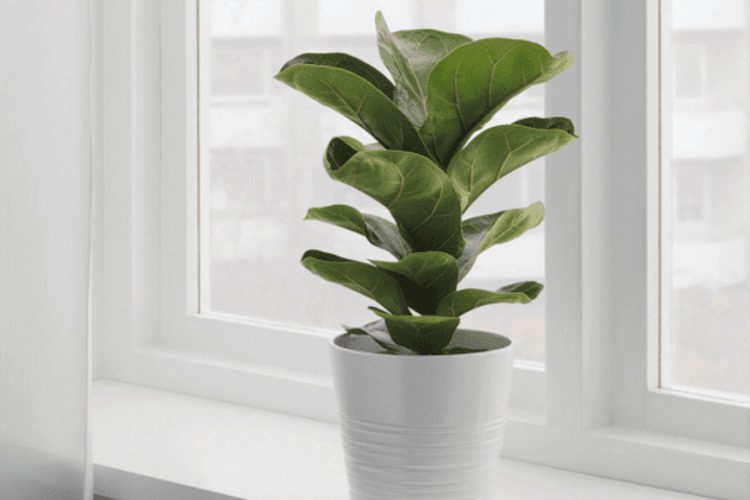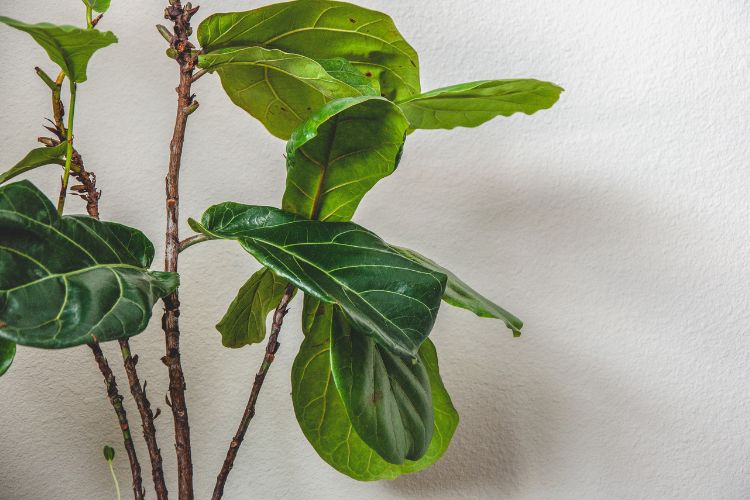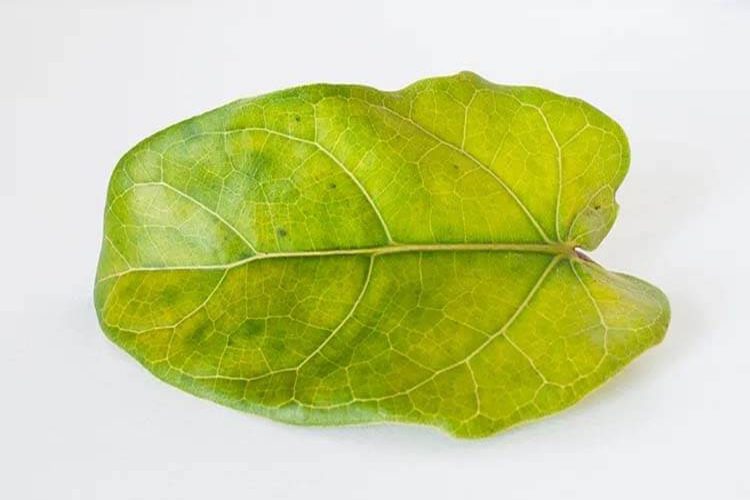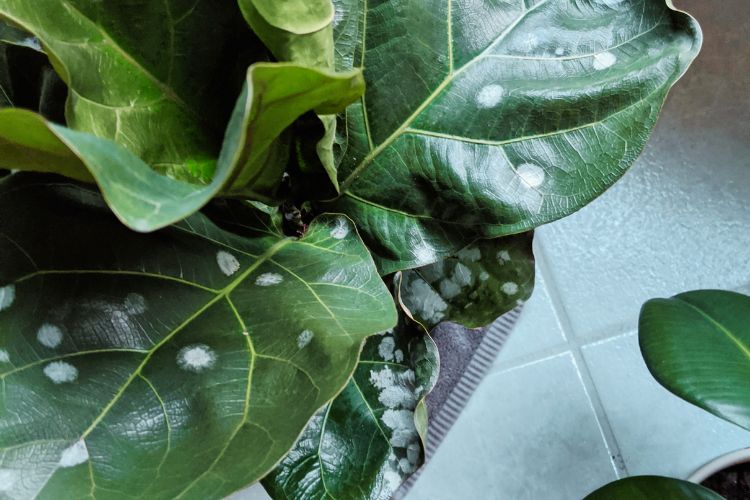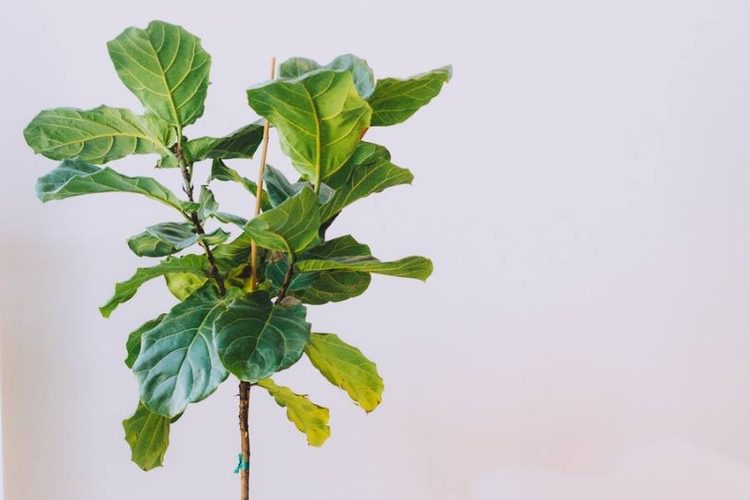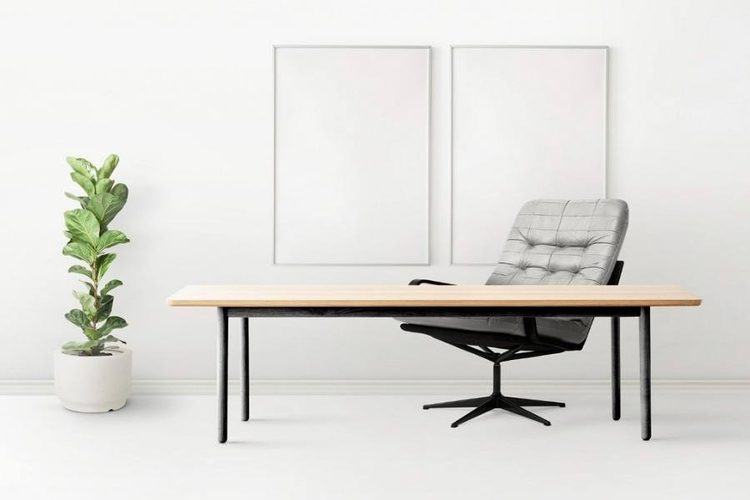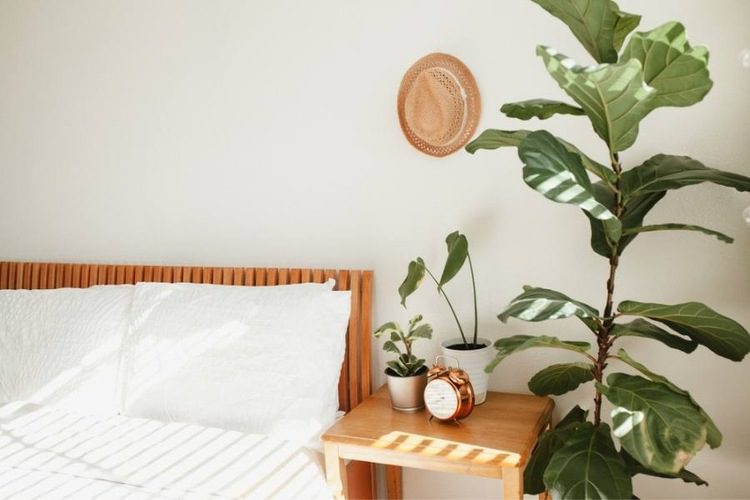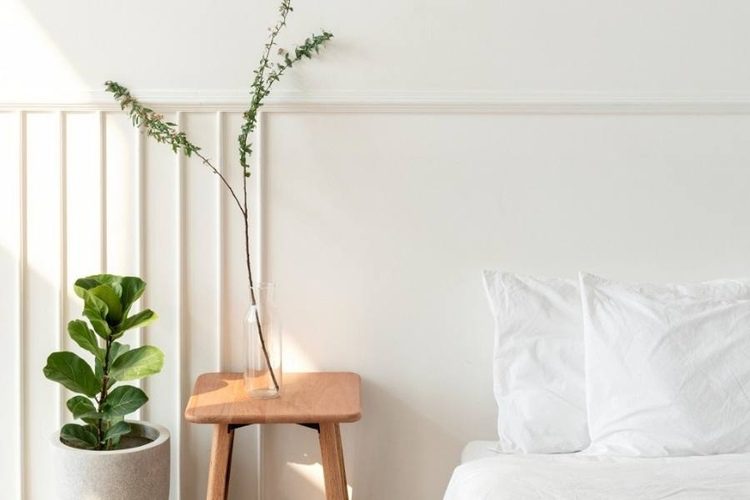Fiddle Leaf Fig Brown Leaves: How To Solve It?
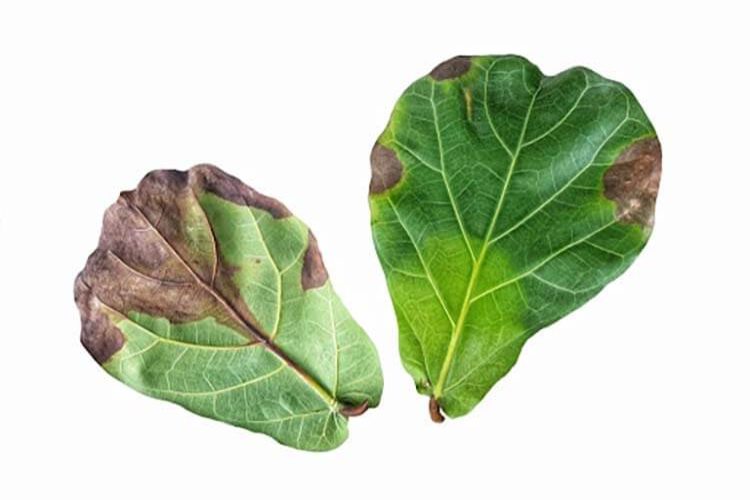
Fiddle Figs are renowned for being incredibly sensitive as well as complicated to cultivate. On the other hand, if you discover that the Fiddle Leaf Fig Brown problem continues to grow, you will probably have to check the living conditions as well as the care process of your plants.
Why Fiddle Leaf Fig Has Brown Spots On Leaves?
Brown spots on fiddle leaf fig leaves are often due to overwatering or root rot. If you notice dark brown spots on your leaves, ensure they do not develop or worsen. Once you’ve figured out what’s causing the patches, you should remove any harm and get the tree back to good health.
A Fiddle Leaf Fig may start to get brown as well as dark markings all over its leaves for several causes. The following is a list of the top causes of browning its leaves and how to address them.
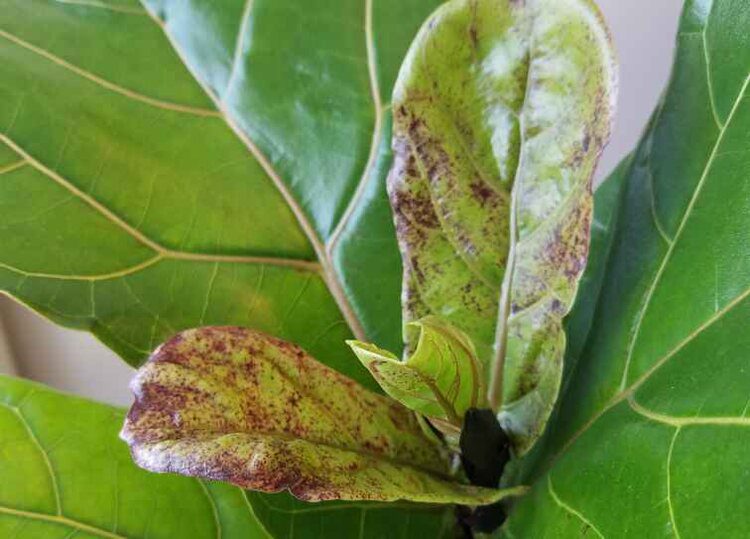
Root Rot
Overwatering-induced root rot is arguably the most frequent cause of brown patches in Fiddle Leaf Figs.
Root rot is a fungal infection that develops when roots are left in water for an extended period of time with inadequate drainage. This issue could get worse if there is not enough sunshine. The roots of your plant may become too damp between waterings if the pot is too big. Root rot has a tendency to attack older leaves first. Start your search with the lowest yellow leaves of your plant, as they will be the first to be affected by root rot.
Particularly, your Fiddle Fig roots require quick-draining soil with lots of ventilation. You should take prompt action if you detect brown patches on your Fiddle Leaf Fig caused by root blight. Small black dots may develop into brown patches that grow in size until the leaf drops. You may check the moisture at the bottom of the roots using a moisture meter if you suspect that your plant has root rot. Root rot is probably the result of your soil’s excessive moisture.
How to fix
Since this is typically the cause of root rot, you should improve it as soon as possible. Good potting soil, a plant container, and infrequent watering are all important. To proceed, you need to first evaluate the damage level. You don’t need to repot your plant if the leaves just have a few brown patches. Allow your plant to dry out for at least two weeks to give the roots enough time to recuperate. Make sure your plant gets enough sunlight, and take out any damaged leaves.
Bacterial infections
Fiddle Leaf Fig bacterial infections may be exceedingly annoying and challenging to treat. Dark brown spots and patches due to bacterial infections have similar symptoms, such as brown spots ranging from tan to dark brown, yellowing leaves, or droopy leaves, but fixing them is frequently more challenging.
How to fix
You should deal with infected leaves quickly to prevent the rest from being affected. Also, do not let the roots get wet for a long time; let them receive enough sunlight. If the damage is not severe, remove any of the leaves with brown spots and repot your plant in a container with adequate drainage using fresh, sterile soil. While healing, give it lots of light and don’t water it as frequently.
Sunburn

Indirect sunlight will help your tree thrive. Sunburn on fiddle-leaf fig leaves is caused by too much direct sunlight. This phenomenon is most likely to occur on the fiddle leaf figs’ very topmost leaves. Sunburn can appear on the leaves in a variety of ways, including:
- Color loss or bleaching may happen.
- Sunburned leaves might be yellow, white, or light brown.
- Brown areas on your tree may seem crispy, with a yellow circle ringing the brown area’s margin.
- The whole leaf is covered with uneven, light brown spots.
How to fix
As a substitute, a sheer curtain or window film can be employed to filter the full sun. Remember that when cultivated inside, Fiddle Leaf Figs prefer intense indirect light and may tolerate soft morning sun for direct light.
Absence of humidity
Most plants thrive throughout the indoor moisture content, but because they are native to mild, humid climates, they may start producing brown, crunchy foliage if the atmosphere is far too dry.
How to fix
Try placing a tiny humidifier close by to raise the humidity level around your Fiddle Leaf Fig. Additionally, air vents and poorly ventilated openings ought to be avoided since they greatly dry out the air near your plant.
Underwatering
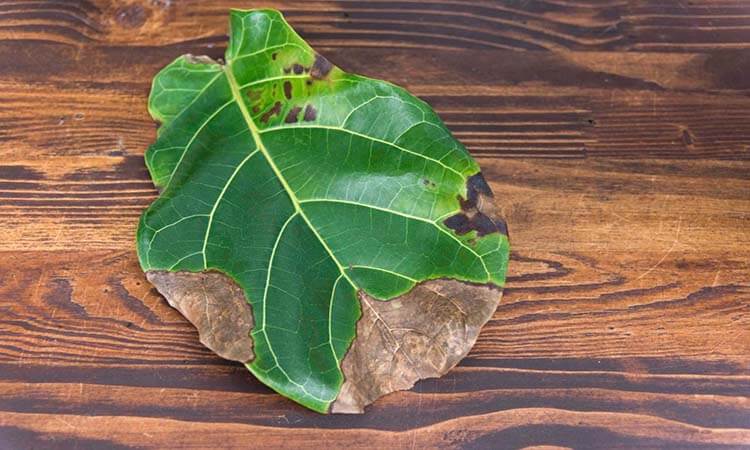
Underwatering can rapidly result in brown, crunchy, and dry Fiddle Leaf Fig leaves since they have specific water quality standards. Although watering is necessary for such tropical plants and the soil should never be allowed to completely deplete, if you regularly underwater this plant, the leaf edges will go brown and wilted.
How to fix
You should control the amount of water that you use to water your Fiddler Fig, follow a schedule, or set a reminder to water them. Also, make sure that water is soaking into the ground and subsequently draining outside the planter through the drain hole.
Overwatering
Overwatering can result in a dark brown leaf, much as underwatering might. You should address and save the overwatered Fiddle Leaf Fig as soon as you see it since it may swiftly cause root rot and brown spots, which can ultimately destroy your plant.
How to fix
It is advised to repot your Fiddle Fig if you discover the symptoms of root rot. To get rid of any extra water in the pot, you may also give your plant fresh soil or plant it in soil that has been mixed with perlite to improve drainage and that has been partially dried between waterings. Additionally, you must always put your plant in a pot with a drainage hole so that any extra water may drain.
Foliage Strike
Fiddle Leaf Figs love the brightness, but if they are subjected to intense natural light for extended periods, they can get leaf burn. In regions where the sun comes out, leaf burn will appear as brown, crackling blotches on the tree’s leaves. Any Fiddle Fig plant with this visible problem should be transferred right away to prevent more harm.
How to fix
As a substitute, a sheer curtain or window film can be employed to filter the full sun. Remember that when cultivated inside, Fiddle Leaf Figs prefer intense indirect light and may tolerate soft morning sun for direct light.
Absence of Light
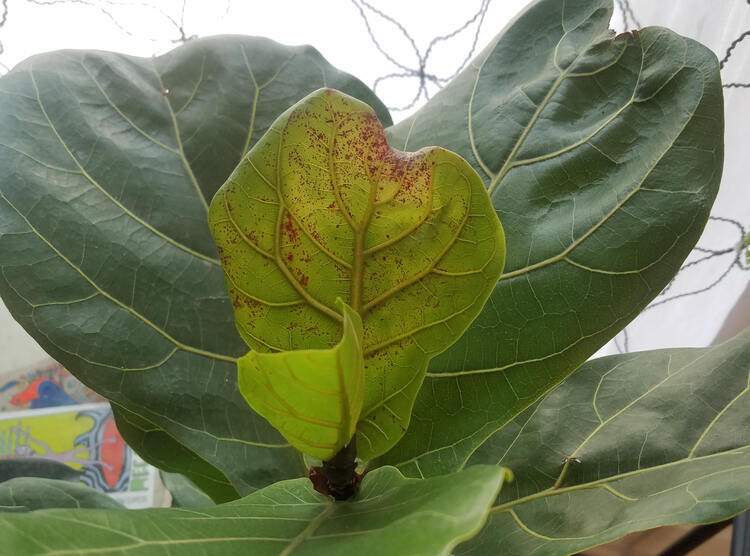
One of the most common problems with figs is that not enough sun causes the leaves to yellow, develop brown patches, and eventually fall. While some plants can survive with less sunlight, the Fiddle Leaf Fig cannot thrive in the absence of light conditions. Therefore, providing it with plenty of light will make them stronger and more resistant to disease, as well as other problems.
How to fix
Make sure your plant gets several hours of bright, indirect light. Typically, to allow this to function, the plants must be located just a few meters from a clear doorway.
How to help the plant recover from browning Leaves?
Watering
Only water the Fiddle Leaf Fig when the soil seems a little dry on top. The plant grows poorly in well-draining soil and demands damp potting soil. Check the depth of the soil with your fingertips when the top 2 inches feel noticeably dry, and water thoroughly until the root ball is moist. Reduce watering in the winter when plants are dormant. Always inspect the ground before actually hydrating Fiddle Figs, since they need reduced irrigation in the winter when they are not continuously developing.
When they are actively growing in the summer, this kind of plant frequently needs more frequent hydration. However, you should always inspect the top of the soil to make sure you have modified your sprinkler plan appropriately for the period. To avoid water collecting around the pot’s base, periodically empty trays and saucers of water. Besides that, Fiddle Leaf Figs require excellent drainage to avoid root rot. After watering, be sure to frequently check any saucers, trays, and ornamental outer pots. Remove any extra water that could be preventing the potting soil from draining correctly.
Temperature
Place Fiddle Leaf Figs in a space that is consistently between 65 °F and 75 °F (18 °C and 24 °C) in temperature. It grows best within that heating rate. However, the most prevalent reason for falling leaves is a quick temperature change, so keep an eye out for supplies of inside heat, drafts from open windows, and any other things that induce a rapid fluctuation in climate.
Humid
In arid locations, you must mist Fiddle Leaf Figs every day to keep the leaves from falling. To create a humid climate that is the same as the conditions of its tropical jungle, mist any remaining leaves and even the branches. If the leaves are to regenerate, this is crucial. Additionally, you may use a plant humidifier, which can be a useful tool in very dry settings because you can control the humidity level and put it right next to the fig. To create a humid environment, place tropical indoor plants that are similar next to one another.
Light

Put the Fiddle-Leaf Fig in a location with strong artificial lighting or sunlight. Considered to be highly light, it is usually preferred in regions with a strong sun, such as Southern California or Arizona, where plenty of sunlight is suitable for it to thrive. This plant thrives in milder arctic regions with a few periods of early sunlight. The fig will have sufficient vitality to generate new leaves thanks to this light condition.
Fertilizer
To avoid leaflet dropping, just apply manure at half intensity as fertilizer in the spring and summer. Fiddle-Leaf Figs may use any common potted plant’s nitrogen, though it’s crucial to apply it at medium supplementation because they are vulnerable to nutrient management burns.
More harm is done by too much fertilizer than by not enough. It is necessary to adjust the amount of fertilizer to a moderate level. If the fig has no leaves, avoid fertilizing it since the plant is under pressure. Only use nutrients at 50% intensity if the spring or summer regeneration is visible.
Check out more information about the ways to fix your brown leaves in the following video:
FAQs


